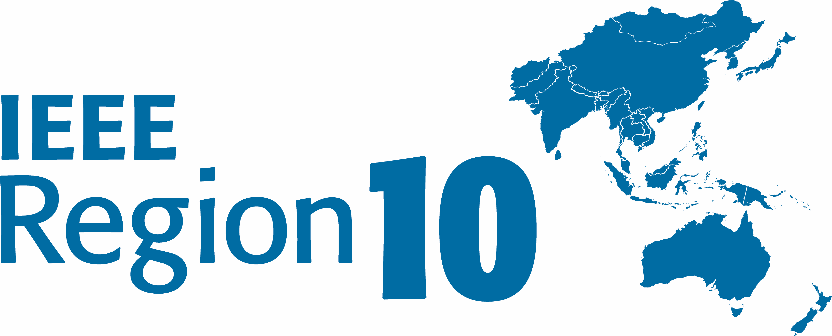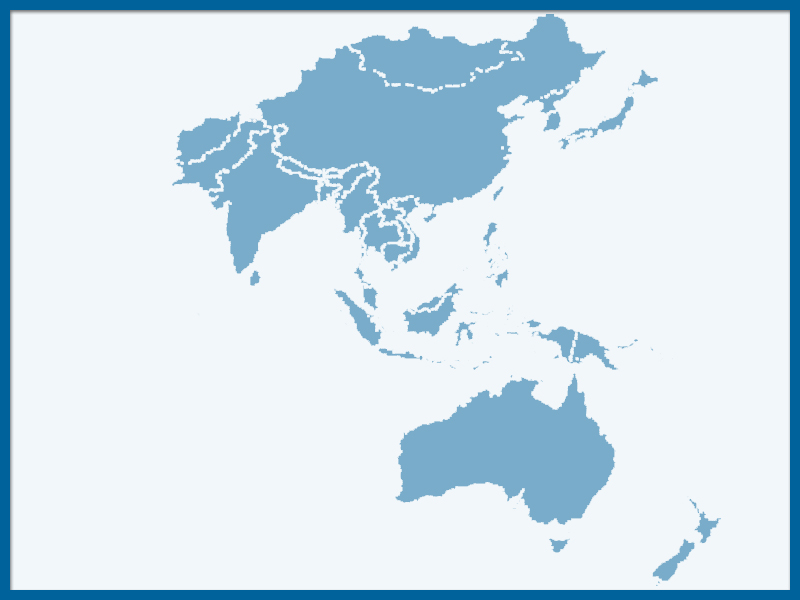By Takako Hashimoto, IEEE R10 Director- Elect 2024
Strategies are being developed to ensure a smooth transition in preparation for the 2028 region realignment.
This article focuses on Students and Women in Engineering (WIE), analyzing their current challenges and proposing solutions for improvement.
Referring to membership data for both Students and WIE, we have identified key issues and provided actionable strategies to address them. This assessment will guide efforts to strengthen these groups as we move toward the successful region realignment.
Student Challenges and Solutions
Regional Student Distribution and Membership Grade Differences in New R10 and new R11
Challenge:
In terms of students, the new R10 will have a smaller number of students, while the new R11 will have a larger student population. Additionally, the membership grade distribution between the two regions will differ significantly, reflecting the distinct characteristics of each region as in Figure 1.
Solution:
To address these disparities, we can implement targeted membership growth initiatives in R10 to attract more students and early-career members.
For R11, where student numbers are higher, we can focus on offering leadership development programs and networking opportunities to help students transition to higher membership grades. By customizing strategies for each region, we can balance student engagement and enhance overall membership quality across both regions.
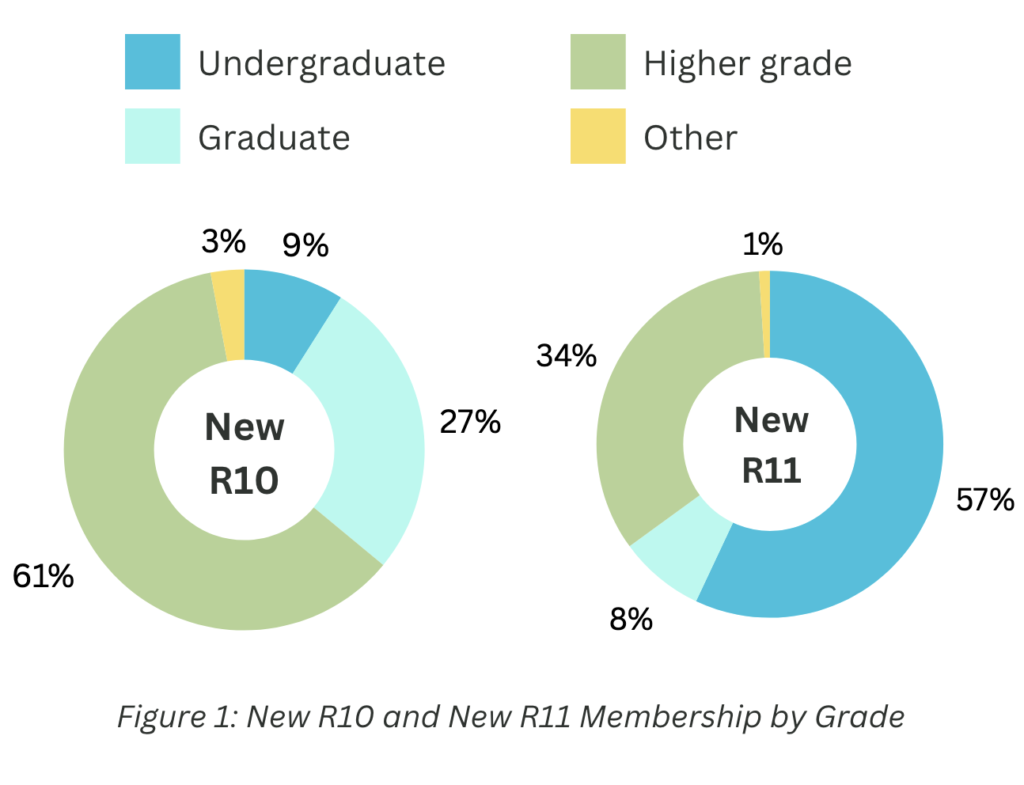
Geographical Constraints for In-person Events (new R10 & new R11)
Challenge:
The wide geographical distribution in both regions makes it challenging to organize in-person events, reducing opportunities for students to participate actively.
Solution:
Leverage virtual platforms to host events and training programs that transcend geographical barriers, allowing students from all regions to participate.
Regional Student Distribution and Membership Grade Differences in New R10 and new R11
Challenge:
Many SBs remain inactive, limiting student engagement and participation.
Solution:
Implement revival strategies, including mentorship programs and leadership training for SB leaders, and conduct regular evaluations to monitor progress and ensure SBs are active and contributing to IEEE activities.
WIE Challenges and Solutions
Low WIE Membership in North Asia (new R10)
Challenge:
WIE membership is significantly lower in the new R10, particularly in North Asia, where participation is limited, as shown in Figure 2.
Solution:
Increase the visibility of WIE in North Asian communities by promoting leadership roles for women and introducing technical growth support programs. Encourage collaboration between WIE and existing SBs or other IEEE entities to enhance visibility and engagement.
Retention in Women in Engineering (WIE) Membership
Challenge:
As illustrated in the chart (Figure 3), WIE community faces a significant challenge related to member retention. The data shows that most members, particularly student members, do not continue their membership beyond the first year. This issue is highlighted in the figure, where the majority of the members (represented by the tall red bar) are first-year members who do not renew for subsequent years.
Solution:
Addressing this challenge is critical for the sustainability and growth of the WIE community, and specific retention activities must be considered to encourage long-term engagement.
Lack of Industry Engagement
Challenge:
WIE members have limited engagement with the tech industry, which restricts opportunities for career growth and development.
Solution:
Strengthen ties with the industry by organizing networking events and workshops, fostering partnerships for industry-academia collaboration, and encouraging mentorship opportunities that connect WIE members with industry leaders.
Biased Membership in New R10 and New R11
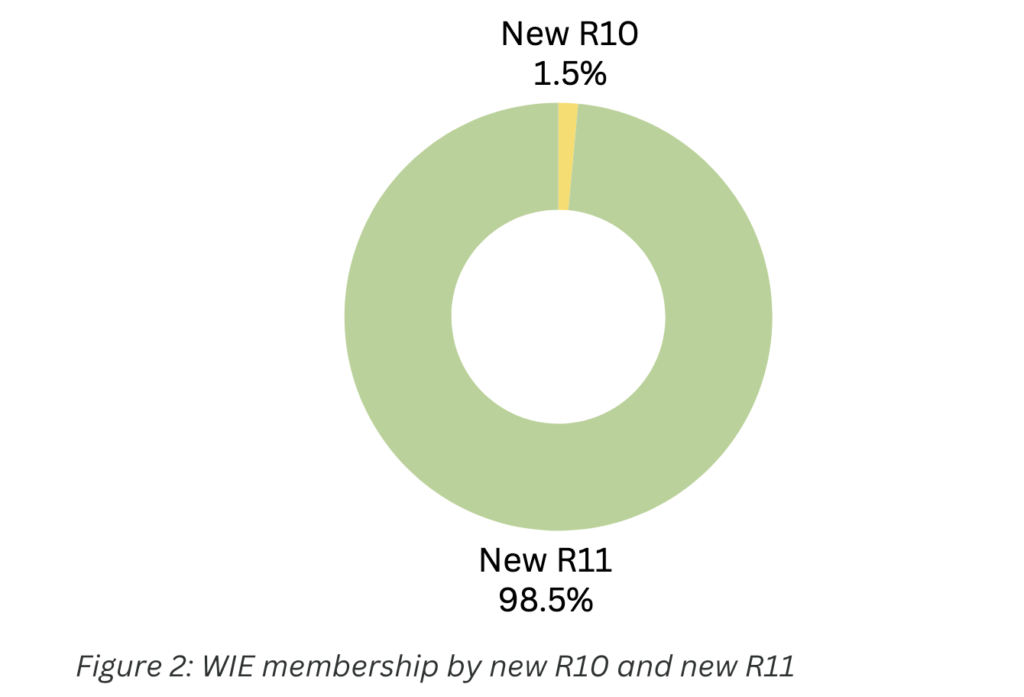
WIE members are very biased to the new R11.
Very few members in the new R10.
Sections that do not have WIE AG;
- Busan (Korea)
- Chengdu (China)
- Daejean (Korea)
- Gwangju (Korea)
- Nanjing (China)
- Taegu (Korea)
- Xian (China)
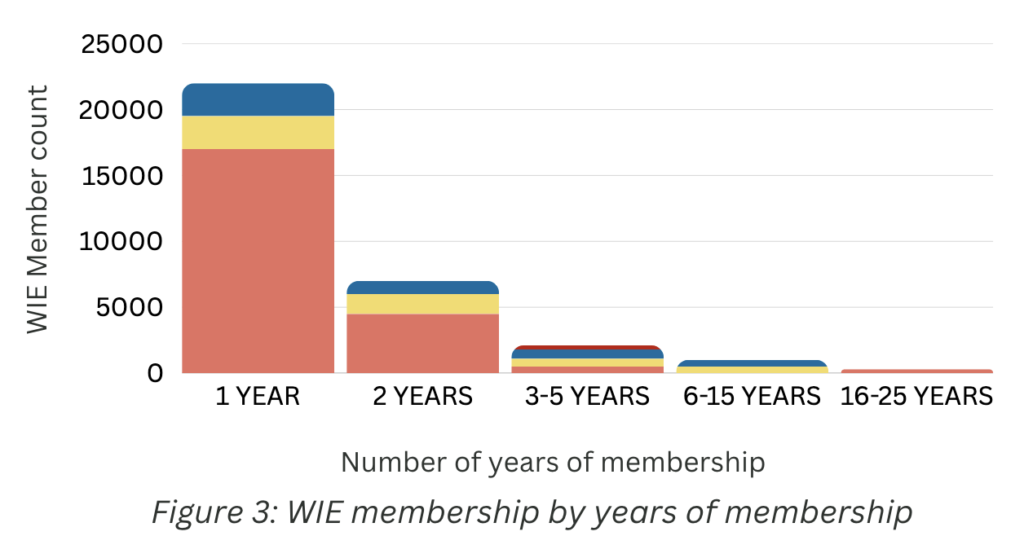
The strategies outlined in this article, aim to address these challenges and provide a roadmap for enhancing student and WIE activities across R10 and R11. By focusing on targeted growth strategies and fostering collaboration, IEEE can better support these communities through the upcoming Region Realignment.
